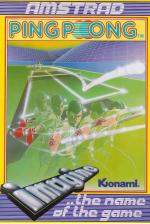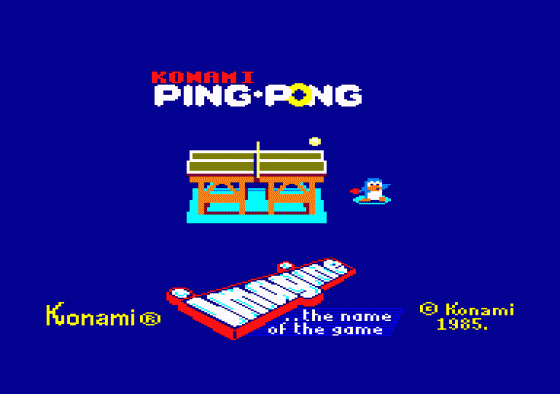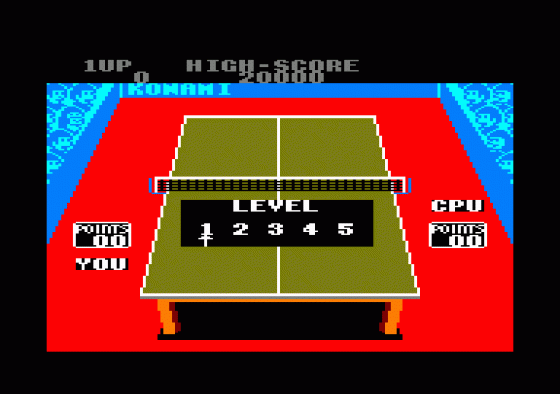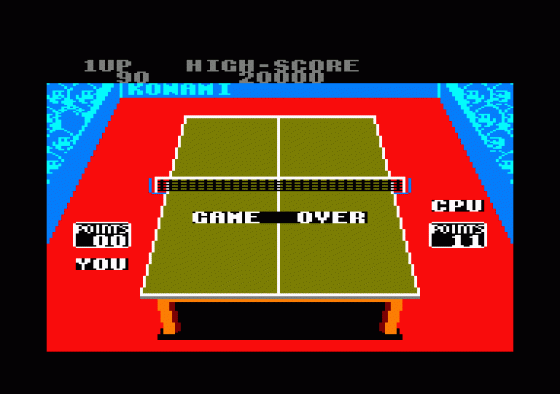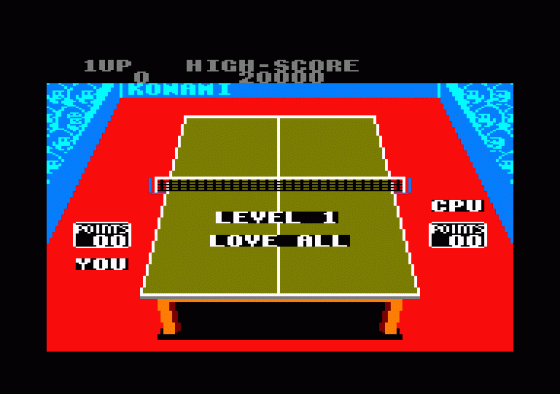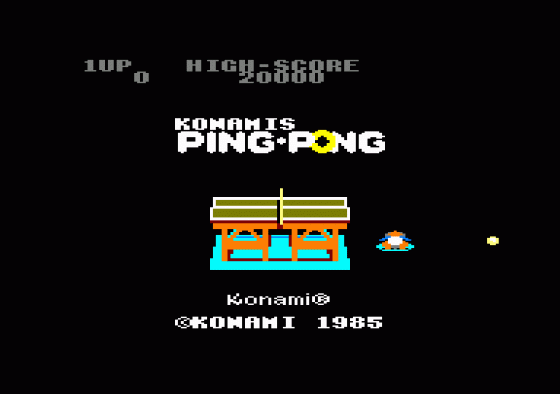
Amstrad Action
 1st March 1986
1st March 1986
Ping Pong
Computer games have come a long way in the last few years and there's no better highlight than the comparison between those old games where you had two white lines for bats and a white dot for a ball, and this all-action table tennis simulation in 3D. This game of skill and quick reactions may not have much complexity or depth but it's fast, furious and fun.
The display shows the view from one end of the table, much as a camera would on TV. The perspective tapers the table and at each end there is a ghostly floating hand holding a bat. This may strike you as a little odd at first but it soon becomes clear that it's essential to allow you to see the ball and table all the time. And it actually looks good as the hands zip around the play area.
There are one or two player games and five levels of skill in each. The skill level affects the speed of the game and, on the toughest two, the computer really gets very difficult to beat or even score against. The winner of each game is the first player to reach 11 points or to establish a two point lead if they get to 10 all. Each player has five services in a row before handing over for the other player's five.

In the two player game, the contest is the best of three games with one player being able to play on the keyboard if desired; in one player games, you are always at the near end of the court but, with two players, being at the far end is a distinct disadvantage and so they alternate ends between games.
When in play the bat will automatically track the ball, leaving the player to decide on his stroke. This can be played either forehand or backhand (aimed right or left) and with top or back spin. A smash can also be used against your opponent's lobs with your own lobs being produced by good/bad timing of your ordinary strokes. Shots can hit the net, land out of court, be completely missed, returned by your opponent. Or you can do the same to him.
There is an additional scoring system to the game points - every time you hit the ball, the score goes up by ten. This leads to a rather odd situation where the longer you can keep rallies and games going the higher the score, whereas quick efficient games on your part will be low-scoring. However, winning is the main thing and success at one level will take you onto the next to continue the battle against a faster and better opponent.

The graphics and sound are very arcade-like and make this a very good conversion. The gameplay itself is also exciting and, despite the limited number of strokes, games can develop into very absorbing contests against a wily computer player. The last level in particular plays at a similar pace to proper table tennis and takes some adjusting to after the early slower levels. An appealing game that just lacks a little in variety alter a while.
Second Opinion
Very good fun - certainly more ping than pong. The graphics resemble very closely the arcade version, which means they're very sharp and clear. The floating, severed hands are an amusing touch and it's a relief not to have to chase the ball as well as decide on your shot. Despite all this user-friendliness, I still found it pretty challenging and just about the best thing of its kind on the Amstrad!
Good News
P. Good display and great disembodied hands.
P. Easy to learn but with very tough later levels.
P. Two player option for added spice.
P. Fast, exciting, quick reaction action.
Bad News
N. Not much variety.
N. Playing at the far end is difficult

